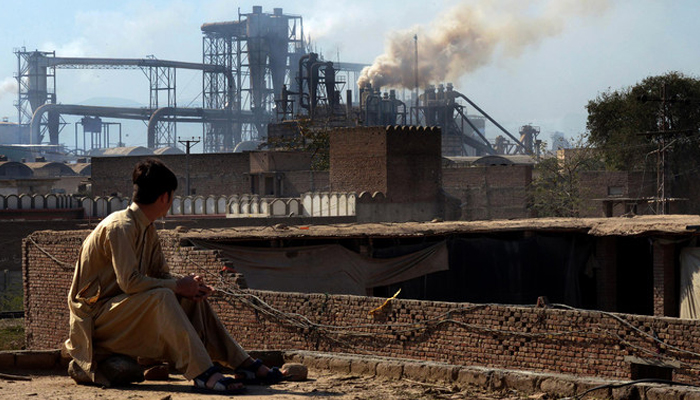How to achieve economic prosperity
This prompts many to assert that Pakistan can also be an economic power if it wants
India, Bangladesh, Vietnam and some other emerging markets have made tremendous strides in the economic and financial sectors. This prompts many to assert that Pakistan can also be an economic power if it wants. But they usually ignore the multiple factors that contributed to the economic prosperity of those countries.
Experts say that factors like the movement of capital, the size and population of a country, a country’s natural resources, developmental infrastructure and business policies, and the overall international and regional political environment and political stability of a state contribute to the economic growth of a country.
Let’s suppose a country has all these prerequisites for industrial and business growth, will it still attract investment? If all states are equipped with the above-mentioned golden principles of business, will they also attain the height of economic prosperity? The answer is ‘no’ because capitalism is not meant to empower all.
Capitalism triggers uneven development. Despite its claims of bringing prosperity to all corners of the world, the reality is different. It brings wealth and opulence to only a few states. It is perhaps because of this that we still have groups like G7.
History tells us that the prosperity of one region or country used to be at the expense of another country or region. For instance, when Spain and Portugal emerged as prosperous nations after 1492, it was at the expense of African, Asian and South and Central American regions. The two European powers ruthlessly plundered these regions, reducing indigenous people to slaves. Merciless massacres, genocides and subjugation of local people should also be kept in view when praising the innovations of these early explorers who are considered the godfather of the new world.
Similarly, the prosperity of the Netherlands in the late 16th and early 17th centuries could be attributed to plunderers who would bring ships from South and Central America brimming with silver and gold. The emergence of the UK and France as economic powers in the 18th and 19th centuries could also be linked to this naked exploitation of various parts of the world. In the case of France, it can be said that the country not only subjugated the people of distant regions and continents but also employed sledgehammer tactics against Europeans.
GDP and other economic indicators were introduced much later. So, it is difficult to gauge the level of economic development of the countries that were involved in subjugating other areas to enrich their territories. But a country’s preparedness for wars and conflicts used to tell how wealthy a nation was. For instance, France, under Napoleon, launched attacks across Europe which definitely required immense resources. Perhaps it was the resources that France accumulated at the expense of other European countries that helped France meet the funds required for wars and military expeditions.
Such military engagements also helped other sectors of the French economy thrive. For instance, France, which lagged behind the UK in textile, started to catch up. It is claimed that it was these military expeditions which especially helped the French state to support science and innovation that turned out to be instrumental in boosting the French economy.
Napoleon or other French ruling elite members who were considered usurpers in other parts and regions of the world oversaw the economic prosperity of their society. According to a history website ‘Erenow’, the silk industry in Lyons, which in 1800 had 3,500 looms, used 10,720 looms in 1808, and in 1810 one textile entrepreneur employed 11,000 workers in his mills. Meanwhile French chemists continued to meet the British exclusion of sugar, cotton, and indigo by making sugar from beetroot, dyes from wood, and linens superior to cotton. They also turned potatoes into brandy.
The economic rise of the British could not have been possible without the destruction of the Indian and Chinese economies. When the British arrived in India, the country used to contribute over 20 per cent to the global GDP, and when it left, this contribution was reduced to less than 5.0 per cent.
China used to contribute over 22 per cent to the global GDP when it was before Western powers. The Chinese were forced to open their markets for British goods. Other European powers and Japan also became partners in this plundering. At one stage, over 40 per cent of British trade consisted of opium that destroyed China but helped the UK, France, Netherland, the US and Japan thrive.
The scramble for Africa was also instrumental in boosting European economies. The ruling elite of Belgium immensely enriched themselves at the expense of Belgium Congo’s people that saw the killing of millions of its inhabitants. The ruthless plundering of raw materials from that region greatly bolstered European economies.
So, if we analyze the economic situation on a regional basis, we can describe continental Europe as one of the centres of economic prosperity. It grew immensely rich between 1492 and 1945. Before the Industrial Revolution, 35 per cent of the world was already under the rule of Western colonial powers which rose to 85 per cent by 1945.
This colonial plundering provided cheap raw materials, free or indentured labour and guaranteed markets to Western colonial and economic powers. Almost all G7 countries have been direct or indirect colonial masters throughout history. The UK, France, Germany, Italy and Japan physically occupied other countries, the US established its sphere of influence over the Western hemisphere, which is a euphemism for a less visible colonial control. Since more than 150 states of the world could not colonize other states, they could not attain this level of economic progress.
The movement of capital is another factor that cannot guarantee universal prosperity. For instance, capital found lucrative profit in China during the1980s and India in the 1990s, so it concentrated there. Now it is moving towards countries like Bangladesh and Vietnam where it can find a better profit margin. Since not all states can offer lucrative profit owing to multiple factors, they cannot attract the attention of investors.
The anarchy of production in capitalism is another reason why all countries cannot be industrialized. With only 22 per cent of the global labour in manufacturing, one cannot name even a single sector of the economy that is not running in over production. Global capitalism designed the economy in a way that some countries will remain producers and others consumers. It is perhaps because of this that while we find heavy state subsidies in the West for farmers, manufacturers and bankers, most financial institutions want the abolition of all subsidies in the Global South.
Consequently, meagre industrialization that some poor states had achieved during the 1960s and 1970s is declining. The reason is simple: if all states manufacture their own goods, why should they buy from a few highly industrialized countries? Therefore, universal industrialization cannot be achievable.
The writer is a freelance journalist who can be reached at: egalitarianism444@gmail.com
-
 Venus Williams Recalls Falling In Love With Husband Andrea Preti
Venus Williams Recalls Falling In Love With Husband Andrea Preti -
 Luke Evans On Broadway Debut: 'I Always Wanted To Do Broadway'
Luke Evans On Broadway Debut: 'I Always Wanted To Do Broadway' -
 King Charles Faces New Challenge From Political Leader On Christmas Day
King Charles Faces New Challenge From Political Leader On Christmas Day -
 Liza Minnelli 'terrified' Of Looking Fragile As Wheelchair Threatens 'legacy': Report
Liza Minnelli 'terrified' Of Looking Fragile As Wheelchair Threatens 'legacy': Report -
 Zooey Deschanel Shares If She Would Rewatch Iconic Holiday Film
Zooey Deschanel Shares If She Would Rewatch Iconic Holiday Film -
 'Dhurandhar' Announces Release Date For Sequel
'Dhurandhar' Announces Release Date For Sequel -
 Kendall Jenner Reveals First Look At $23M Montecito Ranch
Kendall Jenner Reveals First Look At $23M Montecito Ranch -
 Victoria Beckham Urges Son To Have Kids Amid Major Family Feud
Victoria Beckham Urges Son To Have Kids Amid Major Family Feud -
 Jason Kelce Raises Eyebrows With Recent Remark About Taylor Swift, Travis Kelce Wedding
Jason Kelce Raises Eyebrows With Recent Remark About Taylor Swift, Travis Kelce Wedding -
 Quadrantid Meteor Shower 2026: When And How To Watch
Quadrantid Meteor Shower 2026: When And How To Watch -
 Prince Harry, Meghan Markle 'infuriated' Over Major Christmas Snub
Prince Harry, Meghan Markle 'infuriated' Over Major Christmas Snub -
 Hugh Jackman Hits The Midwest For Heartwarming ‘Song Sung Blue’ Tour
Hugh Jackman Hits The Midwest For Heartwarming ‘Song Sung Blue’ Tour -
 Amy Poehler Reveals Why Martha Stewart Will Not Be Invited To Her Podcast Ever
Amy Poehler Reveals Why Martha Stewart Will Not Be Invited To Her Podcast Ever -
 King Charles’s Feelings Towards Meghan Markle For ‘refusing’ UK Visit Get Leaked
King Charles’s Feelings Towards Meghan Markle For ‘refusing’ UK Visit Get Leaked -
 Cancer Treatment Breakthrough: ‘Nanodots’ Kill Tumours, Sparing Healthy Cells
Cancer Treatment Breakthrough: ‘Nanodots’ Kill Tumours, Sparing Healthy Cells -
 King Charles 'gently Backtracking' On Strict Action Against Andrew
King Charles 'gently Backtracking' On Strict Action Against Andrew




